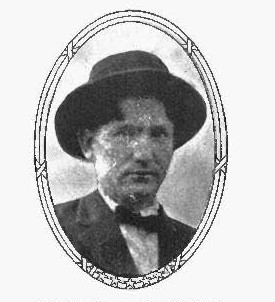Cooper, Henry

Born:
Battle Mountain, Nevada December 31, 1887
Date of Death:
October 3, 1918
Hero Bio:
Henry Cooper was a son of Mr. and Mrs. William Cooper of Battle Mountain, Lander County, Nevada. He was born at Galena, in the same county, December 31st, 1887. As a child he attended school in Battle Mountain, and thereafter resided in that vicinity until the time of his enlistment. At different times he was employed as a vaquero and in blacksmithing, following the latter trade in Hoquiam, Washington. On October 2d, 1917, he was called with a contingent of Lander County men, and reported at Hoquiam. He was assigned to Company 3, 1st Battalion, 166th Depot Brigade at Camp Lewis, Washington, On the 4th of November, he was transferred to Company E, 161st Infantry, 41st Division; on December 13th he was in foreign service. He served with the 41st (Depot) Division until February 20, 1918, having in the meantime been made a Private, First Class, (January 10th), when he was sent with replacements to Company F, 9th Infantry, of the 2d (Combat) Division. On June 1st he was made Mechanic.
From the 18th of March until the 16th of May, the 2d Division was in line between St. Mihiel and Verdun. From this point it was removed to a point of reserve northwest of Paris. On the 27th of May the German offensive broke. On the 28th the 1st Division captured Cantigny, and the 2d was in readiness to relieve it, but the rapid advance of the Germans to the Marne developed such a critical condition at that point that the 2d was hastily dispatched to the Chateau-Thierry-Paris Road to intercept the enemy. This the fighting men of the 2d accomplished in masterly fashion. They blocked the German advance on Paris on the morning of June 1st, and on the 4th, after savage fighting, captured Belleau Wood. Thereafter they took Bouresches and Vaux (July 1st) from Germany’s best troops. On July 10th the 26th Division relieved them.
The 15th of July marked the last German offensive. After elaborate preparations they threw the whole weight of their armies into the fight in a desperate attempt to take Paris. For three days the valley of the Marne ran red; then, on the 18th, Marshal Foch ordered the great allied counter-offensive. A few chosen sentences from General Pershing’s account of this battle will tell the part played by the 2d Division: “The First and Second American Division, with the First French Moroccan Division between them, were employed as the spearhead of the main attack, driving directly eastward, through the most sensitive portion of the German lines, to the heights south of Soissons. . . . .The Second Division advanced 8 kilometers in the first 26 hours, and by the end of the second day was facing Tigny, having captured 3,000 prisoners and 66 field guns. . . .The result of this counter offensive was of decisive importance. Due to the magnificent dash and courage of our 1st and 2d Divisions, the tide of war was definitely turned in favor of the allies.”
From August 9th to the 18th the Second Division was in line north of Nancy, on the east side of the St. Mihiel Sector. When our troops wiped out the sector (September 12-16) the 2d played its part, advancing from Remenanville to Rembercort.
October 3-9, the Second was engaged with the Thirty-Sixth between Rheims and the Argonne. The Second captured the key position to Mont Blanc, repulsed violent counter attacks, and took St. Etienne, thereby driving the Germans from land which they had held since 1914. Major E. N. McClellan has written: “The Battle of Mont Blanc Ridge was fought and won by the Second Division as a unit of the Fourth French Army, between October 3 and 9, 1918, over the desolated white chalky ground of the Champagne, which was scarred and shell pocked by years of artillery fire, marked with huge mine craters, gridironed with an intricate maze of deep trenches and concrete fortifications, and covered with tangled masses of wire. . . . This victory freed Rheims and forced the entire German army between that city and the Argonne Forest to retreat to the Aisne, a distance of 30 kilometers.”–Order of the Second Division. This was the last battle in the career of Henry Cooper, who up to this time had fought with his division through its many campaigns. On the 3d of October, 1918, he was wounded in action while fighting gallantly, and died from his wounds as only a brave soldier may.
Besides his parents, a brother, Richard, who was also in the A. E. F., and three sisters, Mrs. A. Phillips of Beowawe, and the Misses Catherine and Margaret, survived him. He was a cousin of Patrick Hugh Clancy, who likewise gave his life to the nation.
Rank in Death:
Oth INFANTRY 2d DIVISION
Regiment, Brigade, Division in Death
Company F 9th Infantry 2d Division